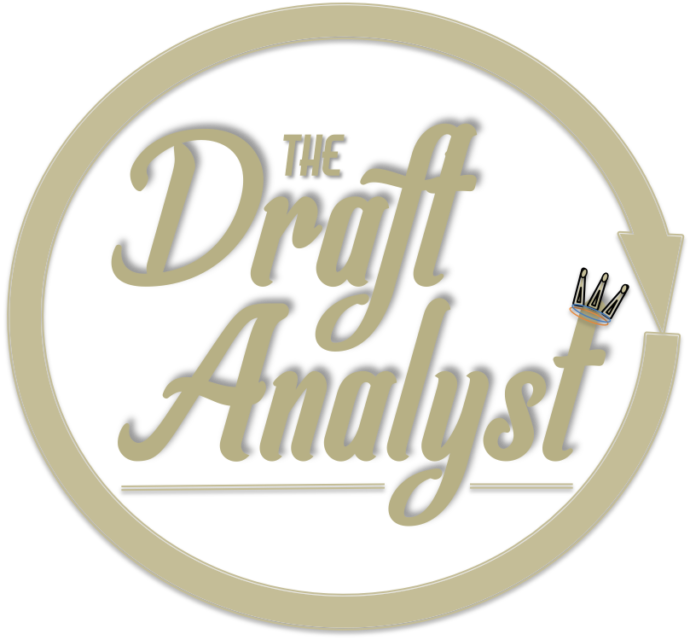2017 NHL Draft
Draft Report Cards
The expansion Vegas Golden Knights struck gold at the 2017 NHL Draft with three first round picks (from left to right) — defenseman Erik Brannstrom and centers Cody Glass and Nick Suzuki.
Steve Kournianos | 7/04/2017 | New York | [hupso]
| B+ | The Ducks didn’t have a whole lot to work with – only five picks and no first rounder via the Patrick Eaves trade with Dallas. If anything, they made their contribution towards the betterment of French Canadian hockey by taking two of the eight Quebec-area prospects drafted, two-way C/W Maxime Comtois (Ranked No. 39) and shifty playmaking C Antoine Morand (Ranked No. 25). Both picks were high QMJHL draft picks and preseason favorites for the first round, so getting them as a package deal in the second round looks like good value. They added two more physical forwards in USHL overager C Jack Badini (Ranked No. 65-OA) and WHL C/W Kyle Olson (Ranked No. 104), who looked good for Team Canada at the under-18’s last April. The Ducks closed out their draft by taking Swedish G Olle Eriksson Ek (Ranked No. 16-G), a backstop who was inexplicably relegated to backup duties for Team Sweden at the aforementioned U18 worlds after an excellent season in Sweden’s Superelit. | |
 |
B- | Over the weekend, the Yotes loaded up on positional defenders, beginning at 23rd overall with QMJHL’er LHD Pierre-Olivier Joseph (Ranked No. 46) , a smart, poised defender who stood out among Charlottetown’s deep backline but is rail thin and is a few years away from being NHL ready. Rugged C/W Mackenzie Entwistle (Ranked No. 63) is a hard-nosed forechecker with some finishing skills around the net, while Guelph C Nate Schnarr (Ranked No. 110) has size and decent puck skills but never came across as a possession driver or player who keeps you up at night. Defenders RHD Filip Westerlund (Ranked No. 99) and LHD Noel Hoefenmayer (Ranked No. 88) are two-way defenders that can be used on the power play, while rearguards RHD Cameron Crotty (Ranked No. 290) and LHD Michael Karow (Ranked No. 222) –are two stay-at-home types who will play for Boston University and Boston College, respectively. Chayka gets a high five for drafting Swift Current’s skilled C Tyler Steenbergen (Ranked No. 2-OA), but his final pick of Swede RW Erik Walli Walterholm (NR) is a head scratcher when you consider not only the list of names who outperformed him in Sweden’s J18 circuit, but those with higher upside. |
 |
B- | The Bruins picked a forward with their first pick only once in the last 7 drafts, and when you consider that one player is David Pastrnak, I think it’s time somebody tell Don Sweeney – a former defenseman – TO STOP DRAFTING DEFENSEMEN. We get it Don. You love the guys patrolling the back end. Now do your fans a favor and start stockpiling forwards with skill . That being said, LHD Urho Vaakanainen (Ranked No. 17) is a kid I had in my Top-10 for a good chunk of last season. I think he’s criminally underrated, and it took a week’s worth of U18 games to get the media and fans to warm up to him. The kid can flat out skate and distribute the puck, but you have to wonder if he’ll ever be given the chance to flourish when you consider how crazy deep Boston’s blueline depth is. They took only two forwards with their six picks – two-way centers Jack Studnicka (Ranked No. 50) and Cedric Pare (Ranked No. 327), and neither has significant top-six upside. G Jeremy Swayman (Ranked No. 21-G) is a good goalie prospect the Bruins organization could use, while a pair of 7th round European rearguards in Sweden’s RHD Victor Berglund (Ranked No. 346) and Czech import RHD Daniel Bukac (Ranked No. 202) are two massive projects that will have to exceed expectations to even dream about cracking the Bruins’ aforementioned depth on defense. |
 |
A- | The Sabres have a tough time winning hockey games, but man to do they ever score points with yours truly when it comes to the draft. Sure, C Casey Mittelstadt (Ranked No. 2) is considered a gift at 8th overall. But new GM Jason Botterill not only grabbed some much needed firepower with his first pick , but added additional skill players in C Marcus Davidsson (Ranked No. 30), speedy LW Linus Weissbach (Ranked No. 10-OA), and a pair of swift puck movers in smallish RHD Jacob Bryson (Ranked No. 128-OA) and Finland’s RHD Oskari Laaksonen (NR). Throw in the selection of No. 2-ranked goalie Ukko-Pekka Luukkonen, and you have the potential for one of the best drafts of any team. |
 |
B+ | The Flames don’t get enough credit for the prospects they’ve assembled, especially those along the blueline. Calgary has done quite well at the draft table – four of their top five scorers were original draft picks. GM Brad Treliving didn’t have many picks to work with as he traded both his 2nd and 3rd rounders, but big puck mover LHD Juuso Valimaki (Ranked No. 16) is a perfect fit into a system that requires mobility and smarts from its defensemen. Towering Slovak two-way center Adam Ruzicka (Ranked No. 47) was a preseason first rounder who had a strong second half on a defensive-minded team. Medicine Hat’s double-overage power forward RW Zach Fisher took three years to put up substantial numbers, but most were at 5v5 and he’s effective around the goal. Treliving stuck with the winger theme with the final two picks – Baie-Comeau’s slick RW D’artagnan Joly (Ranked No. 156) and Swedish RW Filip Svenningsson (Ranked No. 141). Both are dual pass-shoot threats, with Joly a better stickhandler and Svenningsson the quicker skater. |
 |
B | A near playoff birth shouldn’t have impacted the way GM Ron Francis does business at the draft table, and on the surface it looks as if he wanted to address the perceived need for big forwards. Center Martin Necas (Ranked No. 9) is anything but big, but the dynamic Claude Giroux clone was a steal at 12th overall. The Canes went a little high for overage C Eetu Luostarinen (Ranked No. 121-OA), who does a lot of little things well but isn’t the best skater. Taking an overage two-way center with below-average speed at 42nd overall had a significant impact on their grade. Stay-at-home RHD Luke Martin (Ranked. No. 61) was a solid grab at 52 and one day will compete for a support role on one of the Canes solid top two pairings. Overage center Morgan Geekie (Ranked No. 5-OA) is a skilled playmaker with good size, but like Luostarinen has issues with first-step quickness and separating himself from chasing opponents. Power winger Stelio Mattheos (Ranked No. 59) is a good project pick at 73rd considering his side, tenacity and developing goal-scoring abilities, and Francis continued with his fascination with Finland by taking 6’2 goalie prospect Eetu Makiniemi (Ranked No. 20-G) and frail puck mover LHD Ville Rasanen (NR). Overage LHD Brendan De Jong (Ranked No. 117-OA) at 166th is a decent puck mover with size but defending the rush and making proper reads are two areas he struggles with. |
 |
A | The Hawks had a busy week, not only for hosting the draft itself, but for serious activity on the trade front. They entered the weekend with a bunch of picks and an obvious need for puck-moving defenders. Not only did Chicago grab two of the better ones in RHD Henri Jokiharju (Ranked No. 24) and RHD Ian Mitchell (Ranked No. 31), but it earned an extra pick by trading down from 25th to 28th. That bonus selection – dynamic Russian overage RW Andrei Altybarmakyan (Ranked No. 4-OA) – may turn out to be one of the best moves of the draft. The Hawks kept rolling the overager dice by scooping up speedy RW Tim Soderlund (Ranked No. 180-OA), two-way defender RHD Roope Laavainen and power play sniper LW Parker Foo – all three are skilled and move well. GM Stan Bowman and staff added two more mobile rearguards in the fifth and seventh rounds in Czech LHD Jakub Galvas (Ranked No. 145) and LHD Joshua Ess (Ranked No. 251), respectively. I identified this draft to be deep in puck-moving defensemen and weak on skill forwards, so it was nice to see the Hawks not only identify an organizational weakness, but be aggressive at the same time. |
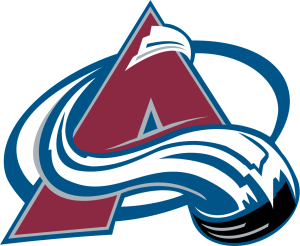 |
A | The Avs and GM Joe Sakic get a lot of grief (ahem, Matt Duchene?), and most of it is warranted. To their credit, however, they’ve done well the last few drafts. Most of us thought this was the draft for a team as leaky as the Avs to beef up on goalies and defenders who can actually, you know, defend. But unpredictability is a hallmark of Draft Day, and Colorado surprisingly opted for skill, skill and more skill. RHD Cale Makar (Ranked No. 4) may turn out to become not only the best defensemen from this draft, but one of the top blueliners in the entire league. Selecting RHD Connor Timmins (Ranked No. 32) could cement the point men on their power play for the next 10 years. Rugged RW Nick Henry (Ranked No. 101) is capable of putting up points but was buried on a deep Regina squad, so keep an eye on his production next year. The next two picks – C Igor Shvyryov (Ranked No. 3-OA) and RW Denis Smirnov (Ranked No. 6-OA) – were tremendous selections when you consider the two were clearly among the top of a very good group of overagers. Lastly, puck-mover LHD Nick Leivermann (Ranked No. 14-OA) is capable of running a top pairing and was one of the draft’s top defenders in terms of skating and playmaking. |
 |
B+ | Although the Jackets toyed with fate by trading their 2017 first rounder to Vegas to shed David Clarkson’s contract, GM Jarmo Kekkalainen left Chicago with a pretty good haul. He went a little off the board by grabbing French wunderkind C Alexandre Texier (Ranked No. 122), but the slick pivot played well in the French senior league and should be expected to dominate the QMJHL next season. Russia G Daniil Tarasov (Ranked No. 10-G) dealt with a knee injury that limited his play, but he has the size and upside to become a very good NHL goaltender. Swedish two-way forward C Emil Bemstrom (Ranked No. 117) was an excellent value pick at 117th overall. The skilled center is solid in all three zones and lethal on the power play. The Jackets in Rounds 5 and 6 took three straight overager wingers – Northern Michigan-bound power forward Kale Howarth (Ranked No. 131-OA), Djugardens RW Jonathan Davidson (Ranked No. 74-OA) and RW Carson Meyer (Ranked No. 33-OA), an Ohio native who excels on the power play. Columbus with is final pick took an skilled offensive defensemen with very good speed in RHD Robbie Stucker (Ranked No. 259), a Minnesota high school committed to Colorado College. |
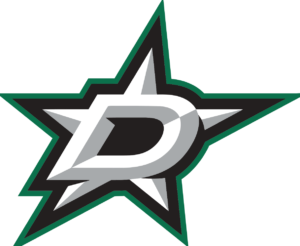 |
A- | Neither fundamentals nor responsible are terms that come to mind when discussing the state of Dallas’s play in both the defensive zone and in goal. And though you’re not going to fix a given season’s problems with the subsequent entry draft, the Stars needed to start somewhere. In Chicago, they made it clear how much of a premium they put on solidifying their side of the red line. Taking LHD Miro Heiskanen (Ranked No. 13) at third overall was in my eyes a tad high, but the kid is a phenomenal two-way defender with a relatively short path to the NHL. Trading up to select the draft’s first goalie in Jake Oettinger (Ranked No. 5-G) wasn’t all too costly, and he’s a legitimate prospect that should be groomed to take over the netminding duties once he’s finished at Boston University. Cerebral LW Jason Robertson (Ranked No. 51) was a solid choice at 39th overall and was a quicker step away from being a lottery pick. Guelph C Liam Hawel (Ranked No. 347) has tremendous size and decent puck skills but is otherwise a huge shot in the dark, while Swedish two-way C Jacob Peterson (Ranked No. 192) has decent upside as a depth center and likely plays for Sweden at the under-20 WJC either this year or next. Hard-nosed RW Brett Davis (Ranked No. 321) is an in-your-face power forward with underrated puck skills and deceptive speed, and G Dylan Ferguson (Ranked No. 59-G) provides the Stars’ pipeline with a nice depth option. |
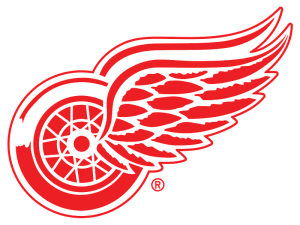 |
B- | The Red Wings at first glance had one odd draft, almost as if they were selecting a team to beat the 1995 New Jersey Devils. Nine of their 11 picks were 6’2 or taller, beginning with two-way C Michael Rasmussen (Ranked No. 23), who at 6’5 was one of the bigger forwards available. Rasmussen is an excellent penalty killer and was one of the better goal scorers in the CHL, but he registered only three primary assists at 5v5. They went way off my board in the second round by taking RHD Gustav Lindstrom (Ranked No. 360), and I think people automatically assume this is some home-run pick because he’s a Swede and it’s the Red Wings. The truth is, Lindstrom is not a good skater and has issues containing quick perimeter forwards. Now that the bad news is out of the way, I think they did a decent job with the remaining picks. LHD Kasper Kotkansalo (Ranked No. 132) is an excellent one-on-one defender, and RW Lane Zablocki (Ranked No. 94) is a menacing power forward with skill. C Zach Gallant (Ranked No. 235) does it all – except skate well, and Muskegon G Keith Petruzzelli (Ranked No. 8-G) is one of the top goalies in the draft class. My favorite of all their picks is towering Dane LHD Malte Setkov (Ranked No. 196), who has underrated playmaking skills but somehow was left off Central Scouting’s midterm and final rankings. RW Jack Adams (Ranked No. 38-OA) was one of the top goal scorers in the USHL, and Saginaw C Brady Gilmour (Ranked No. 143) is an excellent value pick for the seventh round. They took a pair of project defenders in the fifth and sixth round in RHD Cole Fraser (Ranked No. 464) and RHD Reilly Webb (Ranked No. 384), but I think the Wings ignored pure skill and went with big-body types when what they really needed were swift-skating playmakers. |
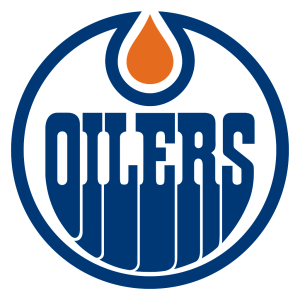 |
A | The Oilers did the opposite of the Red Wings. They seemed to ignore the fact that they were already a fast, exciting team by stockpiling more fast, exciting players. There weren’t many draft eligibles as skilled as Edmonton’s first pick, sublime Spokane RW Kailer Yamamoto (Ranked No. 18), and in the 2nd round they scooped up one of the CHL’s top goalie prospects in Lethbridge’s G Stuart Skinner (Ranked No. 9-G). Hard-hitting LHD Dmitri Samorukov (Ranked No. 65) – a preseason first rounder – has top-pairing upside, and Czech brute RW Ostap Safin (Ranked No. 56) has soft hands and an excellent shot, with Safin good enough to challenge for a 2nd or 3rd line role. They also grabbed one of the draft’s biggest wild cards in RW Kirill Maksimov (Ranked No. 178), a big winger who in the second half took over games and displayed eye-popping moves. Two-way center Skyler Brind’amour (Ranked No. 146) likely falls short of having the kind of impact his father Rod did during his lengthy NHL career, but he’ll marinate in college for four years and possibly develop into a solid depth player. Lastly, RHD Phil Kemp (Ranked No. 168) is a physical, stay-at-home defensemen who revealed creativity and improved footspeed for the NTDP as they won gold at the U18 world championship. |
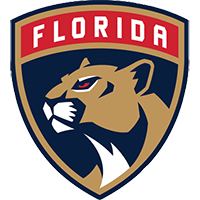 |
A- | Swinging for the fences is a great way to get in my good graces, so kudos to the ever-changing Panthers for drafting players with the potential for far more than just making the NHL. A strong case can be made that their first pick, Mississauga RW Owen Tippett (Ranked No. 5), was the best goal scorer in the draft. The kid can skate and finish, plus play with intensity and deliver big hits. Swift Current import C Aleksi Heponiemi (Ranked No. 41) nearly went exactly where I slotted him, and his playmaking and shiftiness makes him a danger any time he’s on the ice. There weren’t many draft-eligible defenders who can match the kind of overall skill set you see LHD Max Gildon (Ranked No. 64), and his NTDP teammate LHD Tyler Inamoto (Ranked No. 161) is a tweak or two away from becoming a serious game changer. Lastly, triple-overage C Sebastian Repo (Ranked No. 71-OA) had an outstanding Liiga season and his ability to play a 200-foot game should fast track him to North America. |
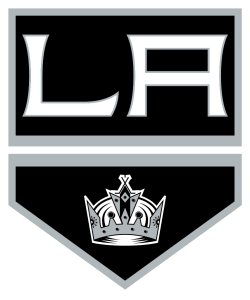 |
B+ | It’s always fun to see how a new regime approaches the draft, and it was nice to see rookie GM Rob Blake and Director of Amateur Scouting Mark Yannetti, go for pure skill rather than a strategy that requires heavy, physical players. The Kings have a handful of solid blueline prospects – some who will play regularly next season in the NHL. But the organization needed forwards in the worst way, so grabbing a playmaker like C Gabe Vilardi (Ranked No. 11) was a great start. Sure, he’s a bit slow. But the potential for stardom is there, and he’s the perfect prospect for Anze Kopitar to groom as his eventual replacement. They took another quality two-way pivot in C Jaret Anderson-Dolan (Ranked No. 60), who like Vilardi can finish and make plays but operates at a faster pace. The question is whether or not he will produce points without the support of Spokane linemate (and Edmonton first-rounder) Kailer Yamamoto. They went way off my board by taking Sault Ste Marie G Matt Villalta (Ranked No. 41-G) in the 3rd round, and I don’t know how the Kings deduced he was the 4th best goalie in a draft loaded with backstops with higher upside and better resumes. They took a pair of puck movers in Round 4 in LHD Mikey Anderson (Ranked No. 76) and LHD Markus Phillips (Ranked No. 113). Both skate well, but what was surprising is that neither player is above 5’11, while their next pick – physical overage LHD Cole Hults (Ranked No. 110-OA) is listed at 6’0. Overage C Drake Rymsha (Ranked No. 127-OA) is a physical two-way pivot with good speed, and his selection made it five of six drafted skaters who were 6’0 or smaller. Coincidence or a thoroughly-planned strategy? My gut tells me to lean towards the latter. |
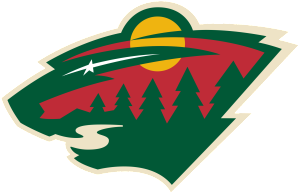 |
B+ | Minnesota has one of the better prospect pools in the league, and what’s impressive is that the Wild has managed to do it without consecutive years in the lottery or stockpiling picks in any of the recent NHL drafts. The pool looks balanced in terms of position, but Minnesota , which didn’t have a pick in either the first or second round , went forward heavy in 2017, grabbing forwards with six of their seven picks. Erie’s cerebral goal-scoring RW Ivan Lodnia (Ranked No. 45) was a gift in the late 3rd round, and playmaker C Mason Shaw (Ranked No. 48) was one of the top draft-eligible power play specialists. They took a smart, 200-foot pivot in C Bryce Misely (Ranked No. 199), and London LHD Jacob Golden (Ranked No. 185) is a kid with good wheels who was buried behind a deep London blueline. One of the most NHL-ready picks of any team is Russian triple-overager C Andrei Svetlakov (Ranked No. 22-OA), who as a two-way center had a regular shift with a very good team in the KHL. The Wild closed out a successful weekend by selecting one of the USHL’s top players in speedy double-overage RW Nick Swaney (Ranked No. 27-OA), a Minnesota native who’ll play for Minnesota-Duluth next season. |
 |
A | Everybody loves their prospects. And the sadness from seeing a beloved kid traded can linger, especially if it happens early in the offseason. Trading a blueline blue-chipper like Mikhail Sergachev stings, even if the return was a talented top-line talent like Jonathan Drouin. Nevertheless, the Habs had to score big points in Chicago. Not just for trading their best asset, but also for having a cupboard lacking strength in the forward ranks. Well, GM Marc Bergevin and staff get a high grade for their work by taking two of my top centers in C Ryan Poehling (Ranked No. 21) and C Joni Ikonen (Ranked No. 32). And while you could knock a former defenseman like Bergervin for cutting off his interest in forwards after the 2nd round, he added three puck-moving blueliners with top-four upside in RHD Josh Brook (Ranked No. 21), RHD Cale Fleury (Ranked No. 42) and LHD Jarret Tyszka (Ranked No. 85). They took a gamble on Victoria LHD Scott Walford (Ranked No. 337), a solid, mobile defender but limited in creativity and puck skills. And I don’t know why G Cayden Primeau (Ranked No. 6-G) fell all the way to the 7th round, but kudos to the Habs for trading up and getting a goalie with legitimate pro potential. |
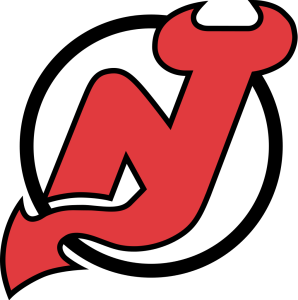 |
A | It’s easy to point to the drafting of potential franchise C Nico Hischier (Ranked No. 3) as the biggest reason behind the buzz and glowing reviews. But GM Ray Shero and staff did a tremendous job on Day 2 as well, stockpiling skilled forwards with high upside and puck moving defensemen. Every NHL team has European-based scouts, but not all will consistently draft players from across the pond. Shero dipped into Europe’s talent pool for the third straight year, beginning with a pair of dynamic Swedish forwards in C Jesper Boqvist (Ranked No. 80) and RW Fabian Zetterlund (Ranked No. 108). Swift-skating RHD Reilly Walsh (Ranked No. 174) is a New England high schooler committed to Harvard but this year should be one of the top USHL defensemen. The Devils stuck with the skill theme by grabbing enigmatic LW Nikita Popugaev (Ranked No. 37), a 6’5 sniper with a blistering shot who once was considered a possible lottery pick. I was a little surprised they took a triple-overage Swiss goalie in Gilles Senn (NR) rather than notable first-year eligible backstops, but he’s 6’5 and played well last year in the Swiss Elite League. They snagged two more quality forwards in Hamilton RW Marian Studenic (Ranked No. 111) and two-way C Aarne Talvitie (Ranked No. 144). Wrapping things up, the Devils selected three defensemen with good puck moving abilities. LHD Jocktan Chainey (Ranked No. 135) was a teammate of Hischier’s and ran Halifax’s power play thanks to his swift skating ability, and Russian overager LHD Yegor Zaitsev (Ranked No. 23-OA) is a smooth skater and hard shooter who likes to hit but needs to clean up his play with the puck. Their last pick, LHD Matthew Hellickson (Ranked No. 61-OA) , was a top-pairing defender for a contending Sioux City squad and played well for the NTDP two seasons ago. |
| A | There really is no other way to put this – the Predators excel at the draft table. Things in Chicago got off to a great start when Finnish sniper LW Eeli Tolvanen (Ranked No. 6) fell into their lap at 30th overall. I get that prospects have pros and cons, but it’s folly to allow the best shooter in the draft to slip to a team that just played in the Stanley Cup Finals. Nashville went back-to-back with NTDP’ers in skilled LW Grant Mismash (Ranked No. 35) and sublime puck mover LHD David Farrance (Ranked No. 40) – two players that were late 1st round quality. A draft wouldn’t be complete without the Preds taking a goalie, and they took a good one in NAHL’er G Tomas Vomacka (Ranked No. 27-G), a UConn-bound Czech who is very quick and athletic. Drummondville C Pavel Koltygin (Ranked No. 70) would have been a steal late in the 3rd or 4th round, so grabbing him in the depths of the 6th should constitute as grand larceny. He’s tremendously skilled and plays hard in all three zones. Another big swing was taken in the final round on Kingston LHD Jacob Paquette (Ranked No. 79), who may not wow you with skill or dynamic plays but can serve as an excellent shut-down option on the penalty kill or in late-game scenarios. The Predators drafted some of the best game-breakers available, and this strategy may provide them with a bigger payoff than most of the teams that chose from the same talent pool. | |
 |
B+ | The Islanders once possessed the league’s top collection of defense prospects. But things change, and a pool once rich in blueliners quickly drained. They began the replenishing process by taking Finnish LHD Robin Salo (Ranked No. 33), who was an underrated defense prospect with similar, if not better numbers in the Finnish league than 3rd pick Miro Heiskanen. RHD Ben Mirageas (Ranked No. 206) went high in the 3rd round, but he’s a solid puck mover who has Top-4 potential. They reached for a triple-overager for the second straight draft, but this year’s pick – Swedish power play quarterback LHD Sebastian Aho (NR) – was a steady contributor in the Swedish Hockey League. Agitating LW Arnaud Durandeau (Ranked No. 112) has very good puck skills and was more than just a passenger on Halifax’s top line with Nico Hischier. He is a strong stickhandler and can make plays from in close. Lastly, NTDP roadrunner LW Logan Cockerill (Ranked No. 307) is an excellent penalty killer and creates a lot of havoc with his speed. These players don’t jump out as possible NHL stars, but the Islanders addressed a significant weak point by selecting players with legitimate NHL potential. |
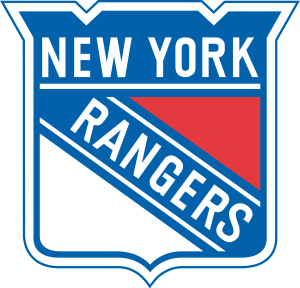 |
B | Now that the dust has settled, you have to admit that both C Lias Andersson (Ranked No. 13) and C Filip Chytil (Ranked No. 36) are excellent NHL prospects. We can argue their upside all day, but keep in mind that this was a team with a pipeline devoid of prominent prospects. The organization lacks forwards with natural skill and hockey sense, and I’m still ticked they passed on the likes of Casey Mittelstadt, Martin Necas, Gabe Vilardi and Kailer Yamamoto – four of the draft’s top playmakers. I really want to give them an F- because the moves thereafter were not only surprising, but went completely against my belief on how a team with one Stanley Cup in 77 years should draft. I mean, we’re talking about a franchise that hasn’t had a star center since Mark Messier almost 25 years ago. Additionally, you have to go all the way back to the 1971 draft and Steve Vickers to locate a homegrown forward who actually became a star in the league while playing for the Rangers. Passing on high-upside forwards like Scott Reedy and Igor Shvyryov in the middle rounds is one thing. Drafting in their place a double-overage stay-at-home defender like LHD Brandon Crawley (Ranked No. 170-OA) is a shining example of why for decades the Rangers have to keep buying stars rather than developing them. Fearless Czech LW Dominik Lakatos (Ranked No. 9-OA) was the top rookie in the Czech Extraliga and plays a heavy game, and steady Swede LHD Calle Sjalin (Ranked No. 198) is a clean, no-nonsense rearguard in the mold of former fan favorite Anton Stralman. Center Morgan Barron (Ranked No. 372) isn’t flashy but the Rangers likely fell in love with his size and two-way play, and slick triple-overage C Patrik Virta (NR) is a pick the Blueshirts might have married themselves to well before the draft considering he is a teammate of 2016 Rangers draftee Tarmo Reunanen. The fact that he was Turku’s best player in a short postseason might have made the pick all the more justifiable, but I’m not a fan of a strategy seemingly centered on loading up with former draft castoffs. |
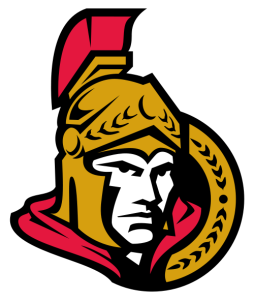 |
B | The Senators had only four picks, but they did quite well with each one. C Shane Bowers (Ranked No. 34) is a skilled two-way center who will play for Boston University in the fall, and his game somewhat mirrors that of top prospect Colin White. LW Alex Formenton (Ranked No. 54) is a pure speedster with a high compete level, but playing for a deep London squad didn’t afford him the chance to get an expanded role. QMJHL overager C Drake Batherson (Ranked No. 55-OA) is an excellent playmaker with good vision but not the fastest or owning the quickest first step. Goaltending depth was an area of concern heading into the draft, and that belief was reinforced by the Sens using one of their four picks on former Regina netminder G Jordan Hollett (Ranked No. 30-G), a backup on a powerhouse but very quick. He should be expected to see an increase in starts for Medicine Hat. |
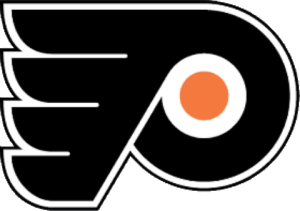 |
A- | Any time you walk away from a draft with the player once considered the top overall pick, you’re going to get a good grade. The Flyers had a strong prospect pool heading into the draft, so it wasn’t as if they had serious needs to address. By drafting C Nolan Patrick (Ranked No. 1) with the second overall pick, the Flyers acquired a player with legitimate star potential, albeit one with health concerns. GM Ron Hextall added an additional first (27th overall) by trading expensive center Brayden Schenn to the Blues and using the pick on C Morgan Frost (Ranked No. 55), a good playmaker who went higher than I expected. Towering LW Isaac Ratcliffe (Ranked No. 58) has decent puck skills and was one of the top players on a bad Guelph team, and he went close to where he should have at 35th overall. A Flyers draft wouldn’t be complete without a goalie, and G Kirill Ustimenko (Ranked No. 31-G) is a quality prospect even if he went a round or two earlier than he should have. Philadelphia beefed up its pool’s flanks by drafting four straight wingers between rounds 4-6 – slow, yet skilled LW Matthew Strome (Ranked No. 71), slick RW Maxim Sushko (Ranked No. 172), versatile playmaker LW Noah Cates (Ranked No. 125) and Swedish two-way sparkplug RW Olle Lycksell (NR). Double-overager LHD Wyatt Kalynuk (Ranked No. 95-OA) has average mobility and will play for Wisconsin next year, but he’s going to have to battle for offensive zone starts and may not see any power play time. Sooner or later, however, these home-run hitting drafts need to translate to NHL success. |
 |
C- | The Penguins are drafting like they’re in no rush to develop and eventually replace the stars creeping closer to 30 on the big roster. They went into the weekend with a first round pick for only the second time in the last five drafts, with the other – Kasperi Kappanen in 2014 – already traded to Toronto in the Phil Kessel deal. In other words, I felt the Pens, Stanley Cup and all, needed to make the most of this draft. Nevertheless, they inexplicably traded the 31st overall pick to St. Louis for 4th line banger Ryan Reaves and pick No. 51, which they used on project LHD Zach Lauzon (Ranked No. 232). I can only guess the Pens like Lauzon’s mobility and poise, but Crosby and Malkin will be well into their 30s by the time he’s ready for the NHL. Plus I think Lauzon’s been sheltered by a very solid Rouyn-Noranda squad with 200-foot forwards. They stuck to the PMD theme by taking quick blueliner LHD Clayton Phillips (Ranked No. 176), but like Lauzon, was taken three or four rounds higher than expected, and this was a draft full of two-way defenders. Slovenia skill forward C/W Jan Drozg (Ranked No. 153) was a perfect grab at 152. He has a lot of pizzazz and is a kid other teams keyed on and couldn’t slow down. Overage C Linus Olund (Ranked No. 77-OA) is small and a perimeter player, and neither LHD Antti Palojarvi (Ranked No. 359) or double-overage RHD William Reilly (NR) have the kind of upside worth gambling on, even in later rounds. It seems like the Pens were drafting for kids that will compliment their current roster — a roster that’s getting older while the pipeline lacks forwards with top-end skill. |
 |
A | I don’t work for the Sharks. And I’m going to guess they don’t use my product to evaluate prospects. Nevertheless, they drafted four of my Top-45 prospects – two in the later rounds. The Sharks did some shuffling over the weekend and consistently jockey and jostle in order to move up or down. They began by taking power C Josh Norris (Ranked No. 29), who is a solid playmaker and crushed the scouting combine. Only a few players came close to matching Norris’s dominance at the physical stations, so it wasn’t much of a shock to see the Sharks take bulldozer LHD Mario Ferraro (Ranked No. 127), a UMass-bound puck mover who like Norris also amazed at the combine. One trade that may do well over time was the decision to trade up to 102nd overall and grab NTDP LW Scott Reedy (Ranked No. 27), a preseason first rounder who fell out of favor with seemingly everyone…expect yours truly. He’s a fantastic stickhandler with an NHL-build, and I wouldn’t be surprised if both he and Norris are NHL linemates once their respective NCAA careers are over. They took a decent gamble on Spokane RW Jacob McGrew (NR), a California native who is a finisher with very good speed but missed all of last season with an injury. Their last two picks – C Sasha Chmelevski (Ranked No. 43) and C Ivan Chekhovich (Ranked No. 44) are absolute steals in Rounds 6 and 7, respectively. Both are capable of taking over games and primed for monster CHL seasons in 2017-18. |
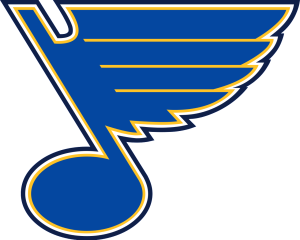 |
B+ | The Blues did a great job in Chicago, grabbing quality playmaker C Robert Thomas (Ranked No. 28) with their first pick, then trading down to 31st where they stole Russian power forward RW Klim Kostin (Ranked No. 8) – a preseason Top-5 prospect. Concerns over Kostin’s shoulder were in my opinion rather premature, as he displayed his power and finesse game at St. Louis’s recent development camp. They added another skilled Russian in RW Alexey Toropchenko (Ranked No. 62), a scoring winger who plays hard in all three zones, kills penalties and possesses a fantastic touch around the net. Quebec leaguer LHD David Noel (Ranked No. 334) is a player I wasn’t as high on as others, but he is a smart kid with a heavy shot who may flourish in a system known for developing quality two-way defenders. Overager LHD Trenton Bourque (Ranked No. 175-OA) has good speed but is quite bland with the puck and isn’t a risk taker. It remains to be seen whether or not he can expand his contributions beyond supporting a puck-moving partner. Their last pick – Swedish LHD Anton Andersson (NR) – is the opposite of Bourque. He skates well and can play physical, but his puck management and reads are brutal. He’s nothing more than an long-term project who could turn into a decent bottom-pair option if he can sharpen his decision making. |
 |
B+ | The Lightning was a team I identified as one that needed help on defense, especially since they were loaded with both quality forward prospects and stars at the NHL level. Drafting steady RHD Callan Foote (Ranked No. 22) at 14th overall was a few spots higher than I imagined, but his maturity and poised play probably vaulted him up draft boards of the teams picking immediately after the Bolts. They rolled the dice on double-overage Russian RW Alexander Volkov (Ranked No. 89-OA), who has an excellent shot and quality puck skills that haven’t translated to points in the KHL. One of the biggest draft steals could be another Russian – C Alexei Lipanov (Ranked No. 49). Lipanov is a wonderful playmaker who plays at a fast pace and can center a top line. Overage RHD Nicolas Perbix (NR) and C Cole Guttman (Ranked No. 150) are a pair of Minnesota-Duluth recruits, with the diminutive Guttman having a fine season as Dubuque’s top-line center. GM Steve Yzerman closed out a solid draft with C Sammy Walker (Ranked No. 318), a strong playmaker who isn’t big or physical but can control shifts with his skating, vision and hockey sense. He’s committed to the University of Minnesota. |
 |
B | I get it. The Leafs already are loaded with high-end prospects and are an up-and-coming team. And things got even more interesting when they stole stud RHD Tim Liljegren (Ranked No. 10) with the 17th pick. From there, however, it all went downhill, beginning with a massive reach by taking RHD Eemeli Rasanen (Ranked No. 131) at 59th overall. The kid has limited upside but is long and loves to play physical. Could the Leafs use a kid like Rasanen in the organization? Maybe. But there were better options with more potential and far better puck skills. They did well in taking G Ian Scott (Ranked No. 3-G), a goalie who stood on his head for a poor Prince Albert squad. I guess there’s a good news/bad news scenario with their second 4th round pick – overage winger Vladislav Kara, a kid whose only mention in my notes were “hits but can’t skate”. The good news is he’s the only overager the Leafs took after going bonkers for them a year ago. The bad news? Well, he can’t skate. It’s odd that Leafs scouts were all over Russia for the second straight year yet decided to take a winger with next to no chance of playing at Mike Babcock’s pace. Mammoth LHD Fedor Gordeev (Ranked No. 455) needs work in just about every area, but he’s 6’6, has a hard shot and average mobility. I guess you can chalk this up as a sympathy vote for a local kid trained in both the GTHL and OHL. The Buds stuck to the OHL theme by taking a kid I like – Sarnia’s two-way forward C/W Ryan McGregor (Ranked No. 126). He skates well, plays fearless, creates turnovers and makes smart decisions with the puck. Lastly, LHD Ryan O’Connell (NR) is a four-year project at Boston University but otherwise a decent pick considering his speed and developing power play skills. He gets pushed around more than he should and loses corner battles to smaller players, so hitting the gym while at BU should be his top priority. It wasn’t a make or break draft for Toronto, but I have a feeling its fans felt as unmoved as I did once the weekend came to a close. |
 |
A | There was no second-guessing this year, as GM Jim Benning had himself a dandy of a weekend. While most were convinced he was taking a defensemen with the 5th overall pick (possibly Cale Makar), the fact that he came away with one of the draft’s most exciting players in C Elias Pettersson (Ranked No. 7) tells me the gentleman and crew did their homework. Pettersson is a dynamic player who controls the flow of a game, and Vancouver needed a player to somewhat bridge the gap from the Sedins to the next generation of stars. Playmaking RW Kole Lind (Ranked No. 38) is a skilled forward who plays scrappy and hits, and LW Jonah Gadjovich (Ranked No. 77) may not skate well, but he’s a bulldog with a phenomenal touch around the net. Benning in our opinion stole the draft’s best goalie early in the third. Windsor’s Mike DiPietro (Ranked No. 1-G) has a bright future ahead of him, and teams will regret passing on him for the sole reason of being listed at six feet tall. Boston-raised offensive defender LHD Jack Rathbone (Ranked No. 276) has high upside but at this point is simply a dynamic skater who needs work on his defensive zone play. The Canucks completed their weekend with three straight overagers – Swedish LHD Kristoffer Gunnarsson (Ranked No. 134-OA), a slow but physical one-on-one defender with bottom-pairing upside, Owen Sound’s tiny but flashy RW Petrus Palmus (Ranked No. 82-OA) and hard-shooting RHD Matt Brassard (Ranked No. 12-OA) who starred for the Oshawa Generals. The Canucks had the NHL’s second-worst power play last year, so it’s no surprise they loaded up on skill players who are lethal with the man-advantage. |
 |
A | The NHL newbies had 12 picks in their inaugural draft, including three in the first round, so some might say they were almost a lock to get a good grade, especially since the front office is starting with a clean slate. But the smart guys in Vegas clearly did their homework, grabbing in the first round two of the best CHL centers in Cody Glass (Ranked No. 14) and Nick Suzuki (Ranked No. 26) as well as phenomenal puck distributor LHD Erik Brannstrom (Ranked No. 12). They added another potential first-pairing defender in towering LHD Nicolas Hague (Ranked No. 20), and collected a bunch of two-way forwards with top-six upside in C Jake Leschyshyn (Ranked No. 89), Danish RW Jonas Rondbjerg (Ranked No. 66) and Swede C/W Lucas Elvenes (Ranked No. 95). Overage C Jack Dugan (NR) was a kid I didn’t think was worthy of a draft nod, but he’s got size and playmaking ability. His first year on a deep Chicago squad in the USHL and a commitment to Providence should reveal how he handles legit competition. The Golden Knights in the later rounds added a pair of centers with decent potential – Niagara’s Ben Jones (Ranked No. 207) and OJHL top prospect C Nick Campoli (Ranked No. 253), while snatching up two of my top-20 goalies in Maksim Zhukov (Ranked No. 7-G) and Jiri Patera (Ranked No. 19-G) tells me the guys running the show in Vegas were blessed with big brains. |
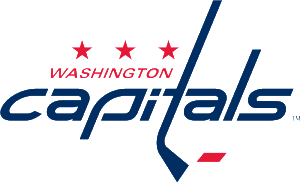 |
C | Forget about the playoff disappointments – the Capitals are a very good team with solid prospects ready to make the jump. The problem? Most are defensemen, so it was a bit confusing to see them not only use three of their four picks on blueliners, but on blueliners with limited upside. The Caps didn’t pick until late in the 4th round, and selecting LHD Tobias Geisser (Ranked No. 449) seemed like a reach. He’s a stay-at-home defender with good wheels, but his puck management skills are shaky, especially considering he’s a converted forward. Sweden’s LHD Sebastian Walfridsson (Ranked No. 239) is a quick puck mover with a good first pass, but Washington’s cupboard is full of prospects of his ilk. Minnesota high-schooler RHD Benton Maass (Ranked No. 409) is a decent defender who will play for New Hampshire, and I actually liked their last pick in the 7th – Norwegian sniper RW Kristian Roykas-Marthinsen (Ranked No. 155), who next season should be a prominent figure in Altumna’s attack. On the surface, it looks as if the Caps had their minds made up on these picks as early as last summer, thus limiting the ability to discover (and covet) players who were more exciting, specifically forwards, with elite puck skills. |
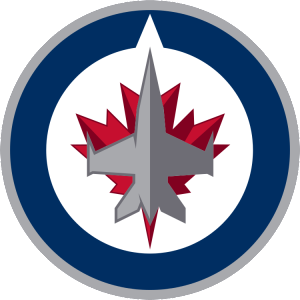 |
B | Before his days an NHL GM, Kevin Cheveldayoff was a physical defender with size who in 1988 became a first round pick. So it came as no surprise (again) that the Jets at the draft went with size, size and more size. Drafting Finnish power forward LW Kristian Vesalainen (Ranked No. 19) with their first pick was an excellent move for several reasons. For one, the Jets got lottery-pick value late in the first round after trading down from 13th with Vegas, which previously acquired the pick from Columbus. Second, the Jets drafted a playmaking winger who one day could compliment Patrik Laine’s shoot-first mentality. LHD Dylan Samberg (Ranked No. 84) went pretty high, and it’s hard to argue against it after watching the kind of season he had for Hermantown. Things got confusing from this point forward, as Chevaldayoff took a pair of 6’4 double-overage defenders in Merrimack’s LHD John Kovacevic (Ranked No. 90-OA) and NAHL’er LHD Croix Evingson (NR) in the 3rd and 7th rounds, respectively. Finnish C Santeri Virtanen (Ranked No. 187) is a good two-way pivot with soft hands, very good speed and the versatility to play in all situations, and German puck mover RHD Leon Gawanke (Ranked No. 152) has the potential to be a power play quarterback. Goalie Arvid Holm (NR) was a questionable choice, not because he wasn’t ranked, but why he wasn’t ranked. All he has going for him at this stage is size (6’4), and it’s not like the Jets run some sort of goalie factory. LW Skyler Mckenzie (Ranked No. 87-OA) was a key figure for Portland but his numbers were inflated by Cody Glass and Keegan Iverson driving possession and creating space for him. |
